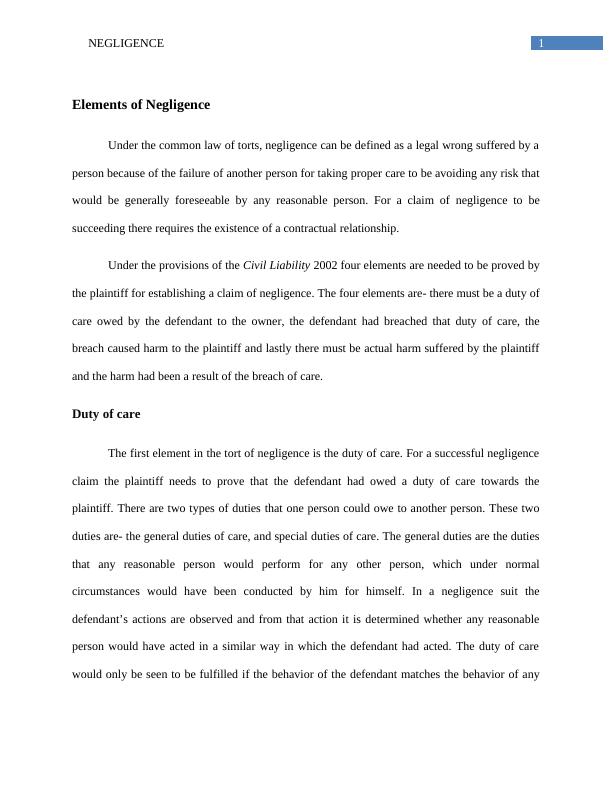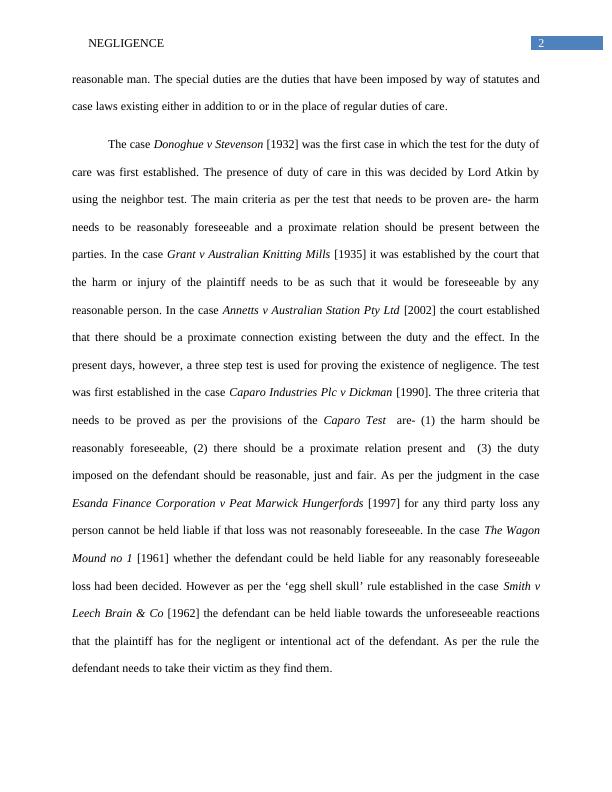Elements of Negligence Case Study 2022
The assignment requires students to consider the elements of the tort of negligence and its implications for their professional life as an Accountant. They are also required to conduct independent research and refer to cases, legislation, articles, or law reports.
8 Pages2027 Words30 Views
Added on 2022-09-21
Elements of Negligence Case Study 2022
The assignment requires students to consider the elements of the tort of negligence and its implications for their professional life as an Accountant. They are also required to conduct independent research and refer to cases, legislation, articles, or law reports.
Added on 2022-09-21
ShareRelated Documents
End of preview
Want to access all the pages? Upload your documents or become a member.
Negligence in Common Law of Torts
|7
|1727
|65
Principle of Negligence | Tort Law Assignment
|8
|1998
|311
Complex Categories of Tort Law Report
|6
|1621
|12
Negligence and Professional Negligence Annotated Bibilography 2022
|9
|2112
|22
Business Law For Business Assesment Report
|5
|1097
|14
Theories of the Common Law of Torts Assignment
|6
|1270
|18



